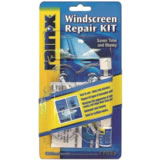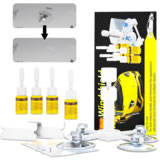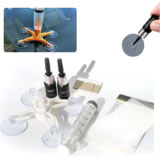Every U.S. state sets its own laws and regulations regarding cracked windshields. It’s important to consult your state of residence laws to see if any windshield cracks you have make your vehicle street legal.
Aside from local state laws, there are also federal regulations set by U.S. Department of Transportation. These are minimum requirements that every state must adhere to.
Federal requirements require drivers to have a clear vision of the road, so any cracks or chips or other damage which can potentially obstruct clear view of the road must not be within critical vision area.
This area is defined as being directly above the steering wheel, two inches from the top and one inch from sides.
Federal regulations also allow cracks or chips smaller than ¾-inch in diameter, as long as they are not located within 3″ of another crack. These cracks however must not be located directly in front of the driver’s view (critical vision area).
All windshield repair jobs will leave a small distorted area. Repairs can never be perfect, and if they are done inside CVA you must ensure they are not noticeable in case you get pulled over by law enforcement.
Very few states have specifically defined the size or position of windscreen cracks that are against the law. Georgia laws for example prohibit operation of vehicles where “windshields or rear window have starburst or spider effect greater than three inches by three inches“.
Most states leave it to individual police officers to determine whether cracks in windshields obstruct driver’s vision.
Make sure you check our cracked windshield laws for your state to see local laws you must adhere to. Then, read our article to find out if your windshield cracks can be repaired.








